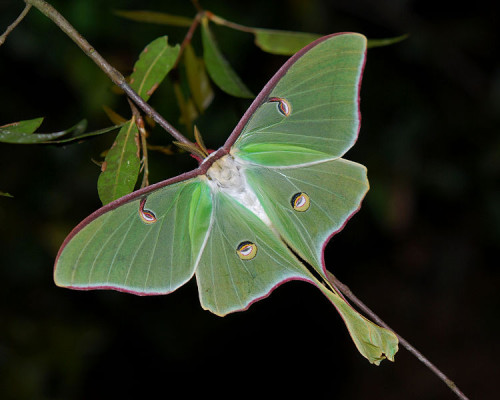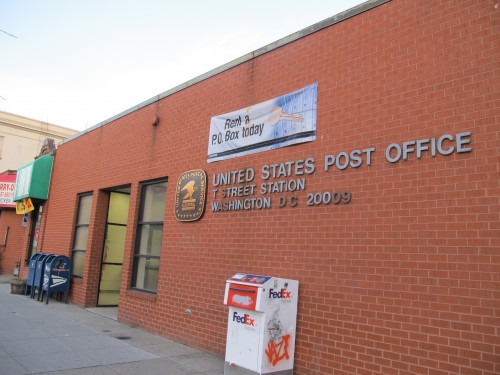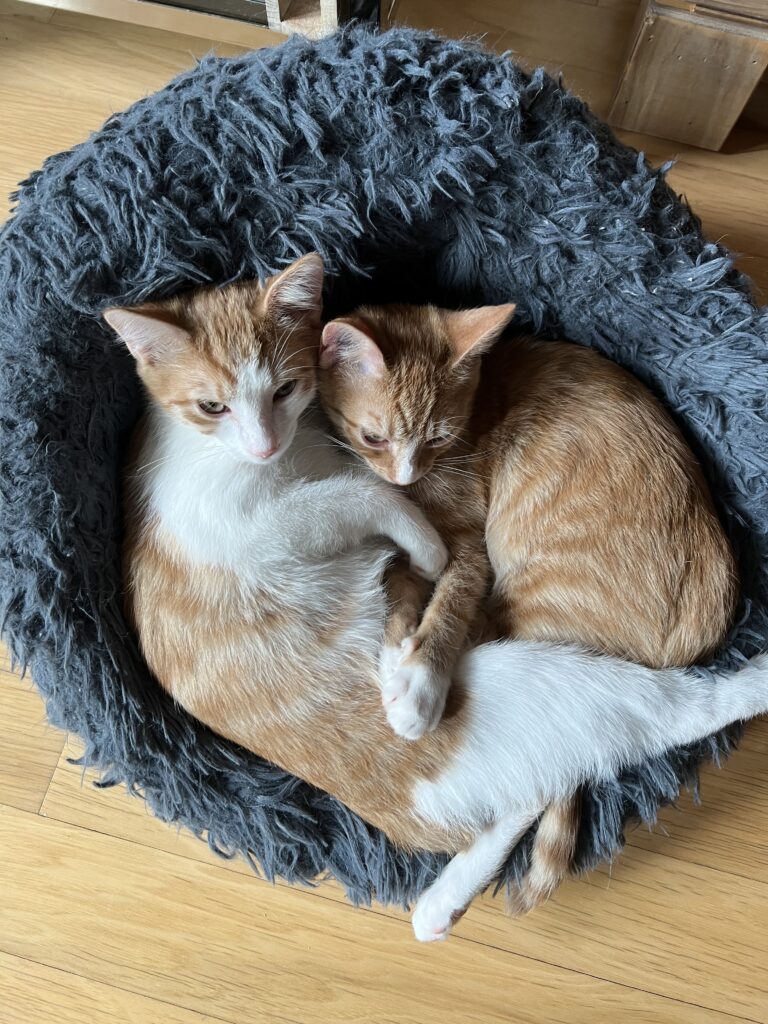
Photo by ggallice via wikipedia
Urban Wilds is written by Lela S. Lela lives in Petworth. You can read Lela’s previous post on raccoons here.
Insects are as close as we get to alien life on Earth – skeptics, just google “macro photo insect.” Their lives run on cycles and timing that can seem cruel or bizarre from a mammalian standpoint. We’re about to witness a big upswing in the insect interest factor when Brood II of the periodical cicadas hatches out after spending 17 years underground. Luna moths, among the most beautiful of insects, have a less dramatic but equally exotic life marked by a complex, colorful development and an early death.
The color of pistachio ice cream, with feathery antennae and long ‘tails’ at the bottom of each wing, Lunas are among our larger moths, with wingspans up to five inches. (You may recognize them from a pharmaceutical ad that aired a few years back.) These gorgeous animals, widespread in eastern North America, are hatching now in our area. Luna moths are similar to cicadas in that their adult phase is poignantly short. After hatching, a Luna caterpillar will go through five stages, or instars, as an increasingly large bright green caterpillar. Pupation takes about two weeks. After emerging from their cocoons, the insects immediately begin to breed. A female Luna sends out pheromones that males of the species can pick up, using their antennae, from several miles away, and glues her 200 or so eggs to host tree leaves. They have to move quickly, because Luna moths pupate with a cruelly efficient structure: they don’t have mouths. Once hatched from their cocoon, they only live long enough to breed and lay eggs, and die within a week.
Continues after the jump.
Moths sport some of the most wonderfully odd or mystical names out there. In the DC area alone, we have species like the Mournful Thyris, Grapeleaf Skeletonizer, Unsated Sallow, Shy Cosmet, and Green Marvel. The Lunas, rather bland sounding in comparison, are named for the moonlike eye spots on their wings, but it can’t hurt the comparison that they’re nocturnal, and use the moon to navigate, like most moths.
Luna moths are becoming increasingly threatened by habitat loss, pesticide use, and the proliferation of bright (moon-like) lights, which disorient them. They’re still considered common, but because the butterfly stage is so short, are hard to run across. You may spot them out in the woods, or clinging to a screen door or window at night.
Recent Stories

For many remote workers, a messy home is distracting.
You’re getting pulled into meetings, and your unread emails keep ticking up. But you can’t focus because pet hair tumbleweeds keep floating across the floor, your desk has a fine layer of dust and you keep your video off in meetings so no one sees the chaos behind you.
It’s no secret a dirty home is distracting and even adds stress to your life. And who has the energy to clean after work? That’s why it’s smart to enlist the help of professionals, like Well-Paid Maids.

Unlock Peace of Mind for Your Family! Join our FREE Estate Planning Webinar for Parents.
🗓️ Date: April 25, 2024
🕗 Time: 8:00 p.m.
Metropolitan Beer Trail Passport
The Metropolitan Beer Trail free passport links 11 of Washington, DC’s most popular local craft breweries and bars. Starting on April 27 – December 31, 2024, Metropolitan Beer Trail passport holders will earn 100 points when checking in at the
DC Day of Archaeology Festival
The annual DC Day of Archaeology Festival gathers archaeologists from Washington, DC, Maryland, and Virginia together to talk about our local history and heritage. Talk to archaeologists in person and learn more about archaeological science and the past of our







